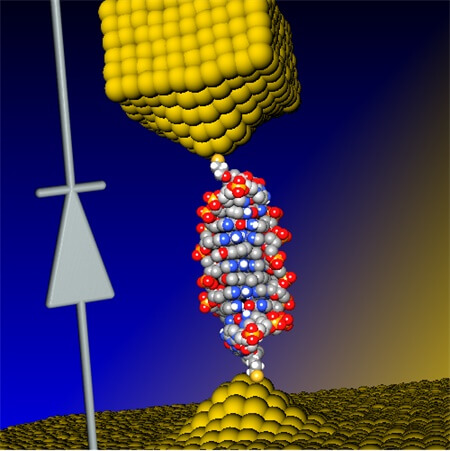It is an electronic component that conducts an electric current in one direction but prevents the flow of current in the other direction. The diode is a central component in electronic devices familiar to all of us from daily use such as: cell phone, computer and practically any electrical device

Thanks to Israeli-American cooperation, researchers from Israel and the US managed to create and characterize the smallest diode in the world - which is the size of one molecule.
A diode is an electronic component that conducts electric current in one direction but prevents the flow of current in the other direction. The diode is a central component in electronic devices familiar to all of us from daily use such as cell phones, computers and virtually any electrical device. This is a collaboration between Prof. Bing-Xian Shu from the University of Georgia in the USA and Dr. Yoni Dobi from the Department of Chemistry at Ben-Gurion University of the Negev.
"The creation and characterization of the smallest diode in the world is a significant milestone in the development of molecular electronic devices," explains Dr. Dobi, "this allows us to gain new insights into the mechanism of electronic conduction."
In Prof. Shaw's research group, they took a single DNA molecule, made up of 11 bases, and connected it to an electric circuit (the size of the molecule is a few nanometers). By measuring the current through the molecule, they saw that the molecule itself does not show any special behavior, but when they inserted a molecule called coralyne into the DNA, the behavior changed drastically - now the current at a negative voltage was 15 times greater than the current at a positive voltage, a necessary behavior for a diode, and from this they concluded that before A diode that consists of only a single DNA molecule.
In order to understand the origin of this behavior, Dr. Yoni Dubi and student Eleanor Zarakh-Harosh used the results of the experiment to build a theoretical model of the DNA molecule within the electrical circuit. The model identified the source of the uncharacteristic behavior, as arising from the breaking of spatial symmetry within the DNA after the introduction of the coralyne.
The results of the research, published yesterday (Monday, April 4.4) in Nature Chemistry http://www.nature.com/nchem/journal/vaop/ncurrent/full/nchem.2480.html, constitute a milestone in the construction Molecular electronic devices, and shed light on the mechanism of electronic conduction in DNA. The research demonstrated for the first time the fact that electronic components can be produced from a single DNA molecule. This may lead to great development in the construction of tiny molecular devices with the size of a few nanometers (compared to the smallest components today which are 1000 times larger).
The two research teams continue their collaboration, with the aim of producing additional molecular devices and improving the performance of the molecular diode.

3 תגובות
יוני
Too bad it wasn't mentioned in the article. I also had this question.
There is even a way to create a DNA-based chip industrially. According to what I understand, today's chips are produced in a printing-like process. How can DNA be incorporated into this commercially?
We get this response a lot...but the truth is that the name "7 nm" refers not to the size of the component, but to the size of a certain element in the component (the channel). The entire transistor is about 100-200 times larger than that
Transistors already reach a size of 7 and even 5 nanometers (in advanced laboratories of TSMC, Samsung, Intel, Micron, Toshiba and other semiconductor manufacturers), so how did you get to "a thousand times"?